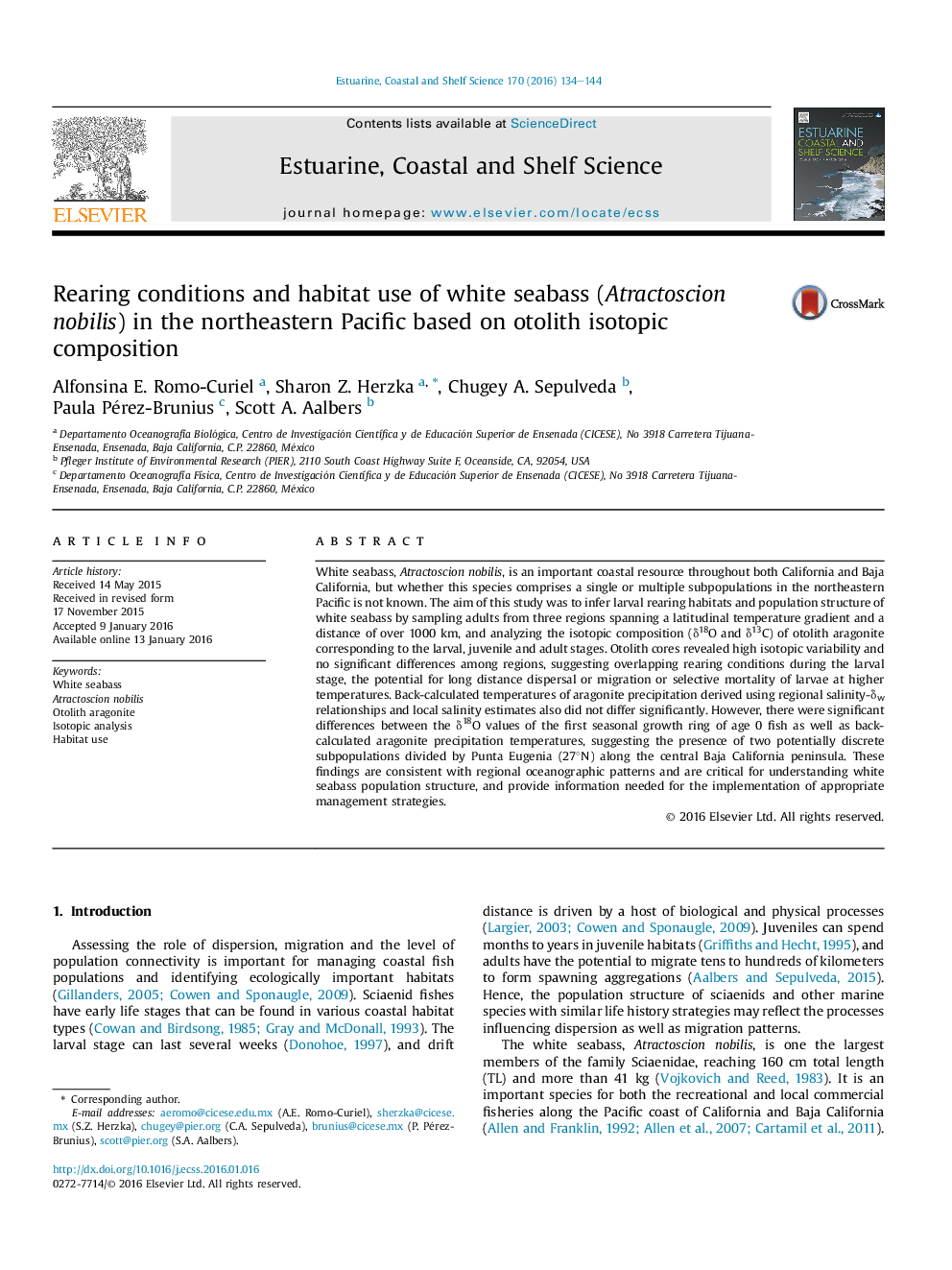| Article ID | Journal | Published Year | Pages | File Type |
|---|---|---|---|---|
| 4539256 | Estuarine, Coastal and Shelf Science | 2016 | 11 Pages |
•White seabass otolith cores revealed high isotopic variability.•Core isotopic values did not allow for discrimination between potential subpopulations.•δ18O values and estimated temperature differed significantly in age 1 fish.•There may be two discrete populations along the Pacific coast of North America.
White seabass, Atractoscion nobilis, is an important coastal resource throughout both California and Baja California, but whether this species comprises a single or multiple subpopulations in the northeastern Pacific is not known. The aim of this study was to infer larval rearing habitats and population structure of white seabass by sampling adults from three regions spanning a latitudinal temperature gradient and a distance of over 1000 km, and analyzing the isotopic composition (δ18O and δ13C) of otolith aragonite corresponding to the larval, juvenile and adult stages. Otolith cores revealed high isotopic variability and no significant differences among regions, suggesting overlapping rearing conditions during the larval stage, the potential for long distance dispersal or migration or selective mortality of larvae at higher temperatures. Back-calculated temperatures of aragonite precipitation derived using regional salinity-δw relationships and local salinity estimates also did not differ significantly. However, there were significant differences between the δ18O values of the first seasonal growth ring of age 0 fish as well as back-calculated aragonite precipitation temperatures, suggesting the presence of two potentially discrete subpopulations divided by Punta Eugenia (27°N) along the central Baja California peninsula. These findings are consistent with regional oceanographic patterns and are critical for understanding white seabass population structure, and provide information needed for the implementation of appropriate management strategies.
Graphical abstractFigure optionsDownload full-size imageDownload high-quality image (168 K)Download as PowerPoint slide
